
Here you can study for the exam. Look up keywords and learn definitions about all kind of subjects.
More subjects
The Japanese Bobtail is a breed of domestic cat with an unusual bobtail more closely resembling the tail of a rabbit than that of other cats. The variety is native to Japan, though it is now found throughout the world. The breed has been known in Japan for centuries, and it frequently appears in traditional folklore and art. As in most other breeds, Japanese Bobtails may have almost any color (or colors, arranged in any number of patterns). Predominantly-white calicoes (三毛, mi-ke, literally 'triple-hair') are especially favored by the Japanese and by cat fanciers, and strongly represented in folklore, though other colorations are also accepted by breed standards. (Source: Wikipedia.org, CC BY-SA)
The Javanese, also known as the Colorpoint (or Colourpoint) Longhair in some registries (though that name has other meanings), is a variety of purebred domestic cat. It is an Oriental-type, the long-haired equivalent of the Colorpoint Shorthair. The variety was developed in North America; its name is derived from the tradition of naming Oriental-type cats after Southeast Asian places. It is an offshoot of the Balinese breed, out-crossed to Siamese and Colorpoint Shorthair, and often having coat patterns not acceptable in those breeds. Individuals may or may not be have point coloration. (Source: Wikipedia.org, CC BY-SA)
The Khao Manee cat (Thai: ขาวมณี, RTGS: Khao Mani, lit. 'white jewel'), or Khao Plort (Thai: ขาวปลอด, lit. 'complete white'), also known as the Diamond Eye cat, is a rare breed of cat originating in Thailand, which has an ancient ancestry tracing back hundreds of years. They are mentioned in the Tamra Maew, or Cat Book Poems. Khao Manee cats are pure white with a short, smooth, close-lying coat. They can have blue eyes, gold eyes or odd-eyes with one of each colour. The odd-eyed Khao Manee is the rarest variety. They are muscular, athletic cats of moderate foreign type and are reputed to be active, communicative and intelligent. (Source: Wikipedia.org, CC BY-SA)
 © Wikimedia.org/Octavio.hgc, CC BY-SA
© Wikimedia.org/Octavio.hgc, CC BY-SA
The Korat cat (Thai: โคราช, มาเลศ, สีสวาด, RTGS: Khorat, Malet, Si sawat) is a silver-tipped blue-grey, short-haired breed of domestic cat with a small to medium build and a low percentage of body fat. Its body is semi-cobby, and unusually heavy for its size. It is an intelligent and playful active cat that forms strong bonds with people and is very vocal, with a sound different from other breeds. Among the Korat's distinguishing characteristics are its heart-shaped head, its large green eyes. Its front paws are shorter than the back paws. (Source: Wikipedia.org, CC BY-SA)
 © Wikimedia.org/ Veda Napha Naramit, CC0
© Wikimedia.org/ Veda Napha Naramit, CC0
The Kurilian Bobtail is a cat breed (or breed group, depending on registry) originating from the (disputed) Russian Kuril Islands, as well as Sakhalin Island and the Kamchatka peninsula of Russia. Short- or long-haired, it has a semi-cobby body type and a distinct short, fluffy tail. The back is slightly arched with hind legs longer than the front, similar to those of the Manx. The breed is also called the Kuril Islands Bobtail, Kuril Bobtail (both often misspelled 'Kurile') and Curilsk Bobtail, and may be referred to without 'Bobtail'. It is sometimes also spelled Kurilean. (Source: Wikipedia.org, CC BY-SA)
The LaPerm is a breed of cat. A LaPerm's fur is curly (hence the name 'perm'), with the tightest curls being on the throat and on the base of the ears. LaPerms come in many colors and patterns. LaPerms generally have a very affectionate personality. The LaPerm is in many ways a cat of moderation with no extremes and is still true to its original type.[clarification needed] It does however have an unusual coat. The breed standard describes a muscular foreign-type body, which is medium in size with longish legs and neck. The head is a modified wedge with rounded contours and a muzzle which is slightly broad of the wedge. In profile, the straight nose leads into a break between the eyes up to a flattish forehead. LaPerms also have rather broad noses, flared ears, and medium-large almond-shaped eyes. (Source: Wikipedia.org, CC BY-SA)
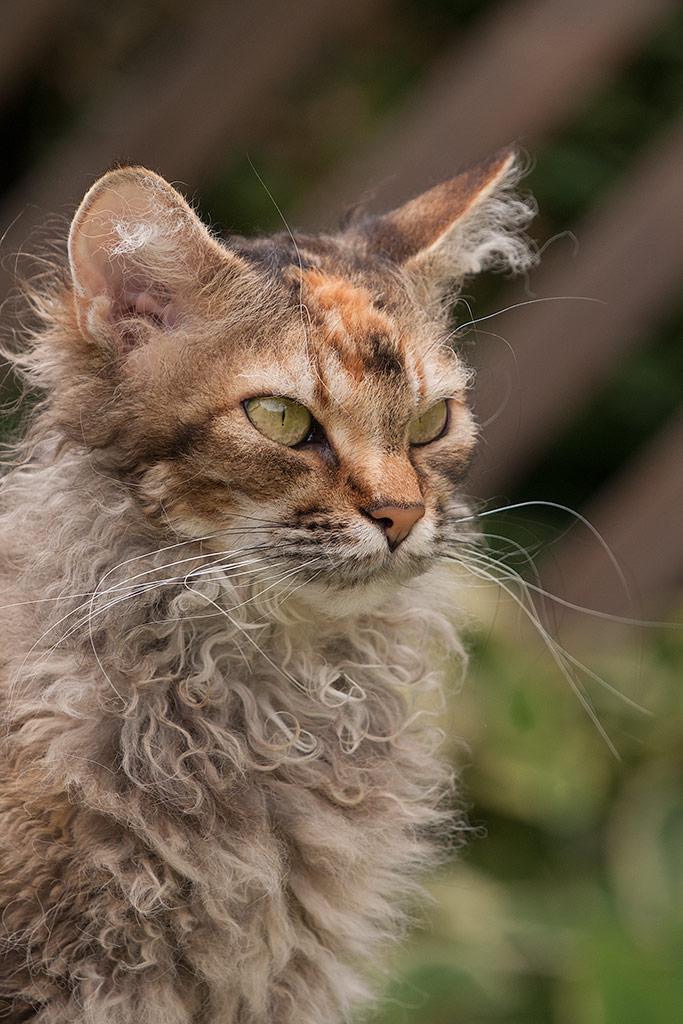 © Wikimedia.org/KRL LPL, CC BY-SA
© Wikimedia.org/KRL LPL, CC BY-SA
The Lykoi (commonly called wolf cat sometimes werewolf cat) is a natural mutation from a domestic shorthaired cat. The mutation has occurred in domestic cats over the last 20 years. DNA testing has been done by UC Davis to confirm that the cats do not carry the Sphynx/Devon Rex gene. The breed was developed by Patti Thomas in Vonore, Tennessee. Lykos means 'wolf' in Greek. Lykoi vary from completely covered in hair to partially hairless. Sometimes they may lose all of their hair resulting in them looking like a Sphynx but it grows back. Lykoi are genetically distinct from the Canadian Sphynx. The hair coat is unique in appearance in that it resembles the coat of an opossum when mostly coated. (Source: Wikipedia.org, CC BY-SA)
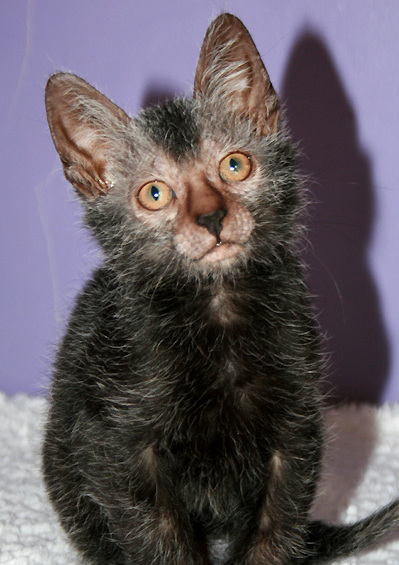 © Wikimedia.org/Christine Auverdin Boulanger, CC BY-SA
© Wikimedia.org/Christine Auverdin Boulanger, CC BY-SA
The Maine Coon is a large domesticated cat breed. It is one of the oldest natural breeds in North America. The breed originated in the U.S. state of Maine, where it is the official state cat. The breed was popular in cat shows in the late 19th century, but its existence became threatened when long-haired breeds from overseas were introduced in the early 20th century. The Maine Coon has since made a comeback and is now the third most popular pedigreed cat breed in the world. (Source: Wikipedia.org, CC BY-SA)
The Manx cat (/ˈmæŋks/, in earlier times often spelled Manks) is a breed of domestic cat (Felis catus) originating on the Isle of Man, with a naturally occurring mutation that shortens the tail. Many Manx have a small stub of a tail, but Manx cats are best known as being entirely tailless; this is the most distinguishing characteristic of the breed, along with elongated hind legs and a rounded head. Manx cats come in all coat colours and patterns, though all-white specimens are rare, and the coat range of the original stock was more limited. Long-haired variants are sometimes considered a separate breed, the Cymric. Manx are prized as skilled hunters, and thus have often been sought by farmers with rodent problems, and been a preferred ship's cat breed. They are said to be social, tame and active. An old local term for the cats on their home island is stubbin or rumpy. Manx have been exhibited in cat shows since the 1800s, with the first known breed standard published in 1903. (Source: Wikipedia.org, CC BY-SA)
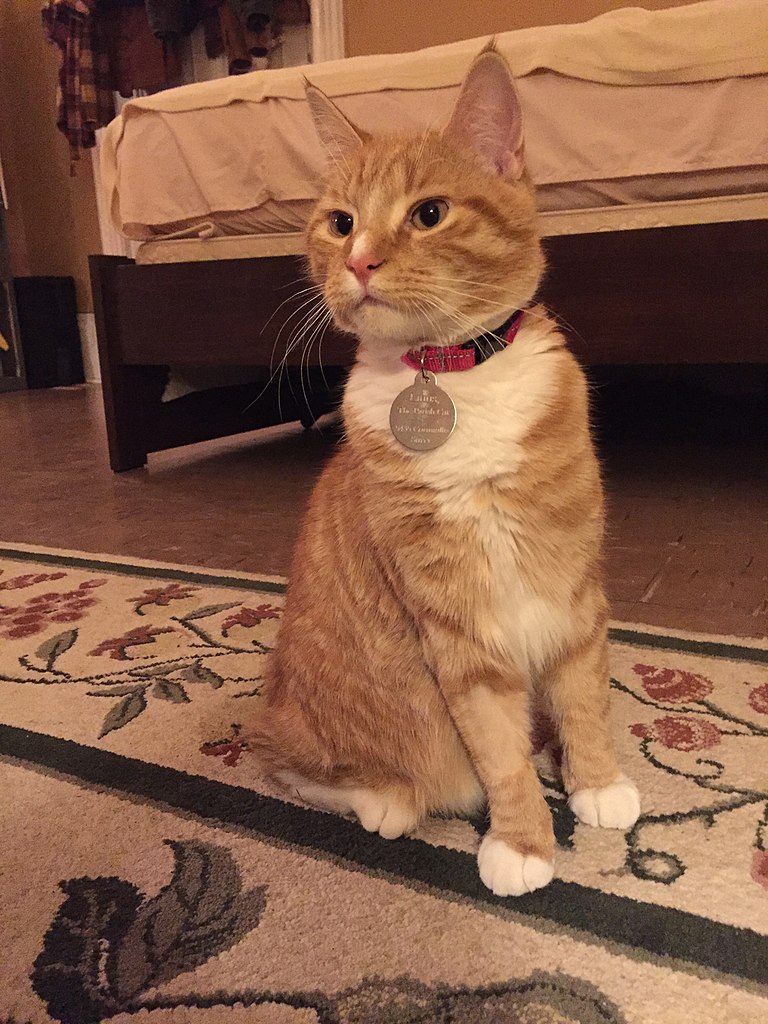 © Wikimedia.org/De Insomniis, CC BY-SA
© Wikimedia.org/De Insomniis, CC BY-SA
The Mekong Bobtail (formerly known as the Thai Bobtail) is a breed of cat. Originally named for Thailand, the country of origin of its progenitors, the breed is now named after the Mekong River. It is naturally distributed throughout parts of Asia and was developed as a breed in Russia, and it was recognised by the World Cat Federation in 2004. Mekong Bobtails have a glossy, short coat that can be any pointed colour without white markings, and large eyes which the WCF's breed standard terms an 'intense blue'. The characteristic bobbed, kinked tail contains at least three vertebrae, but must be shorter than a quarter of the body length. The breed has a slight although rectangular build, and the rump is higher than the shoulders. (Source: Wikipedia.org, CC BY-SA)
 © Wikimedia.org/Alex Opryatin, CC BY-SA
© Wikimedia.org/Alex Opryatin, CC BY-SA
The Minskin is a breed of cat derived from intentional hybrid cross-breedings between the Munchkin and Burmese cat breeds, with the addition of Sphynx and Devon Rex. The Minskin is short-legged with a very short coat. It is described as having a small to medium-sized semi-cobby muscular body, a rounded head, large ears that are wide at the base, a short broad muzzle with prominent whisker pads and eyes that are large and round, spaced well apart, giving them an open and alert expression. Their fur is a sparse coat, which is more dense on their outer extremities, giving them a unique coat description of 'fur-points' that define the mask, ears, legs and tail, with a more sparsely coated cashmere-like torso. (Source: Wikipedia.org, CC BY-SA)
 © Wikimedia.org/Paulmcsorley, CC BY-SA
© Wikimedia.org/Paulmcsorley, CC BY-SA
The Minuet (formerly known as the Napoleon) is a hybrid mix of Persian and Munchkin cat breeds. Categorized by The International Cat Association (TICA) as a domestic hybrid, 'developed from a deliberate cross between two existing domestic breeds, incorporating characteristics of both parental breeds into the new mix.' According to TICA's official standards, these breeds represent the only permissible outcrosses one may use to create the Minuet. This includes the combinations Minuet × Minuet, Minuet × Munchkin, and Minuet × one of the Persian-type breeds (including Persians, Himalayans and Exotic Shorthairs). Minuets come in both long-haired and short-haired varieties. (Source: Wikipedia.org, CC BY-SA)
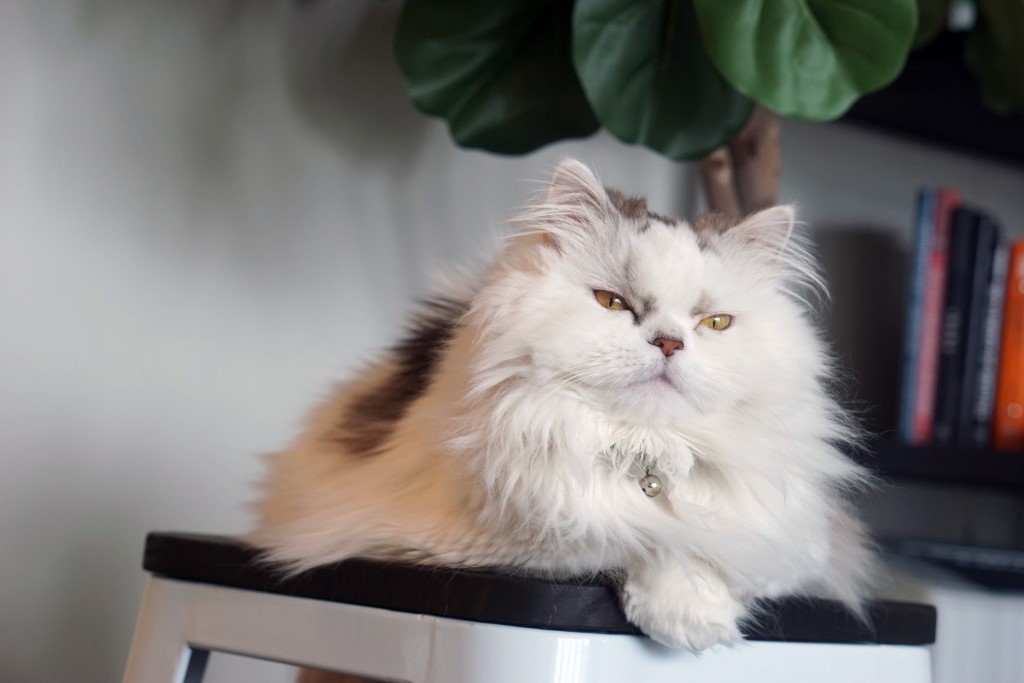 © Wikimedia.org/Parkerwh, CC BY-SA
© Wikimedia.org/Parkerwh, CC BY-SA
The Munchkin, also known as Sausage Cat is a breed of cat characterized by its very short legs, which are caused by genetic mutation. Compared to many other cat breeds, it is a relatively new breed, documented since 1940s and officially recognized in 1991. The Munchkin is considered to be the original breed of dwarf cat. Much controversy erupted over the breed when it was recognized by The International Cat Association (TICA) in 1997 with critics voicing concerns over potential health and mobility issues. Many pedigree cat associations around the world have refused to recognize the Munchkin cat due to the welfare of the breed and severity of the health issues, including the Governing Council of the Cat Fancy (GCCF). (Source: Wikipedia.org, CC BY-SA)
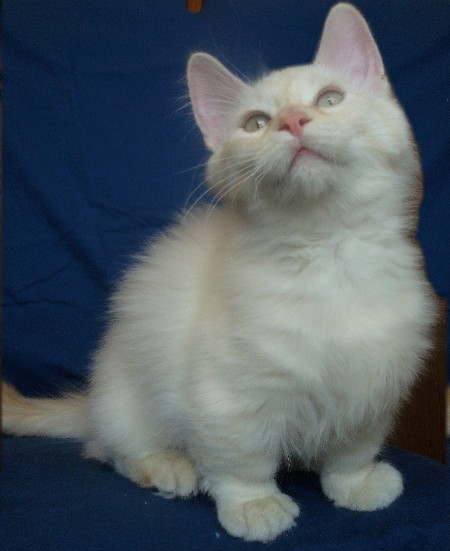 © Wikimedia.org/Sg0668commons, CC BY
© Wikimedia.org/Sg0668commons, CC BY
The Nebelung is a rare pedigree breed of domestic cat. Nebelungs have long bodies, wide-set green eyes, long and dense fur, and mild dispositions. The cat is related to the Russian Blue, but with longer, silkier hair, and is in fact sometimes called the Long-haired Russian Blue. Nebelung cats are characterized by a long, graceful neck and body, long legs, long or medium coat, and long tail. Slightly oval eyes are a vivid green color, or sometimes a yellow-green. Large, pointed ears sit atop a modified wedge-shaped head that is more pointed than rounded. The overall appearance is of a long, sturdy, well-muscled cat. (Source: Wikipedia.org, CC BY-SA)
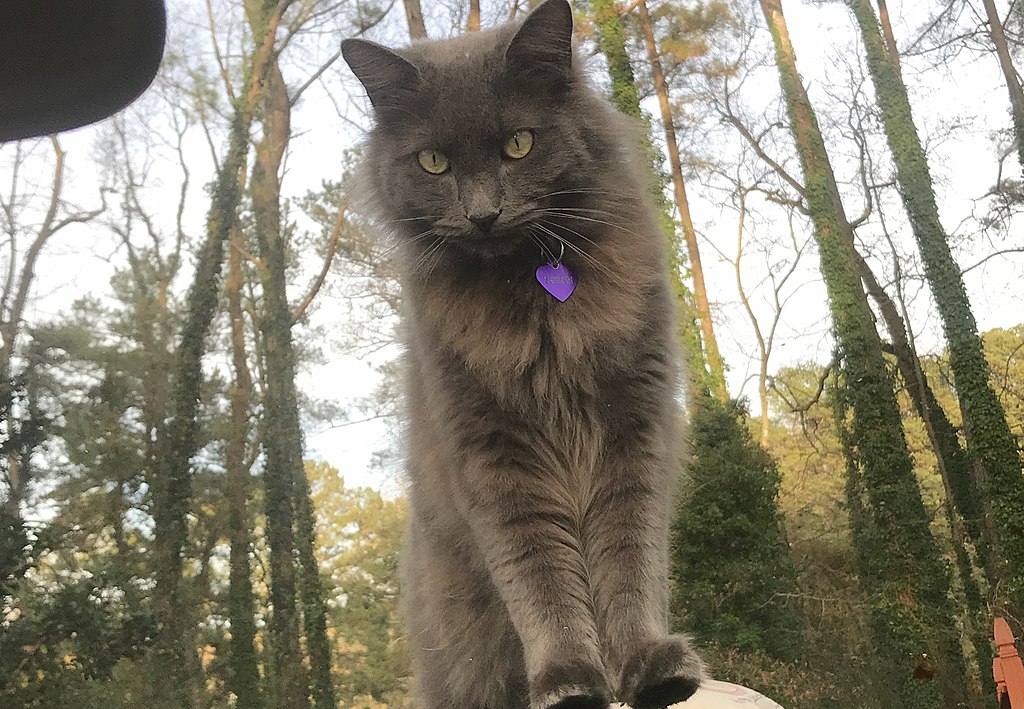 © Wikimedia.org/Amarnth7, CC BY-SA
© Wikimedia.org/Amarnth7, CC BY-SA
The Norwegian Forest cat (Norwegian: Norsk skogskatt and Norsk skaukatt) is a breed of domestic cat originating in Northern Europe. This natural breed is adapted to a very cold climate, with a top coat of long, glossy, water-shedding[clarification needed] hair and a woolly undercoat for insulation. The breed's ancestors may have been a landrace of short-haired cats brought to Norway about A.D. 1000 by the Vikings, who may also have brought with them long-haired cats, like those ancestral to the modern Siberian and Turkish Angora. During World War II, the Norwegian Forest cat was nearly extinct; then the Norwegian Forest Cat Club's breeding program increased the cat's number. It was registered as a breed with the European Fédération Internationale Féline in the 1970s, when a cat fancier, Carl-Fredrik Nordane, took notice of the breed and made efforts to register it. The breed is very popular in Norway, Denmark, Sweden, Iceland, and France. (Source: Wikipedia.org, CC BY-SA)
The Ocicat is an all-domestic breed of cat which resembles a wild cat but has no recent wild DNA in its gene pool. The breed is unusual in that it is spotted like a wild cat but has the temperament of a domestic animal. It is named for its resemblance to the ocelot. The breed was established from the Siamese and Abyssinian. American Shorthair was also added to the original crosses due to an error in the Cat Fanciers' Association, Inc's recording of the breeds used. This mix of breeds created a healthy, large breed of cat completely different in type and appearance from the source breeds. (Source: Wikipedia.org, CC BY-SA)
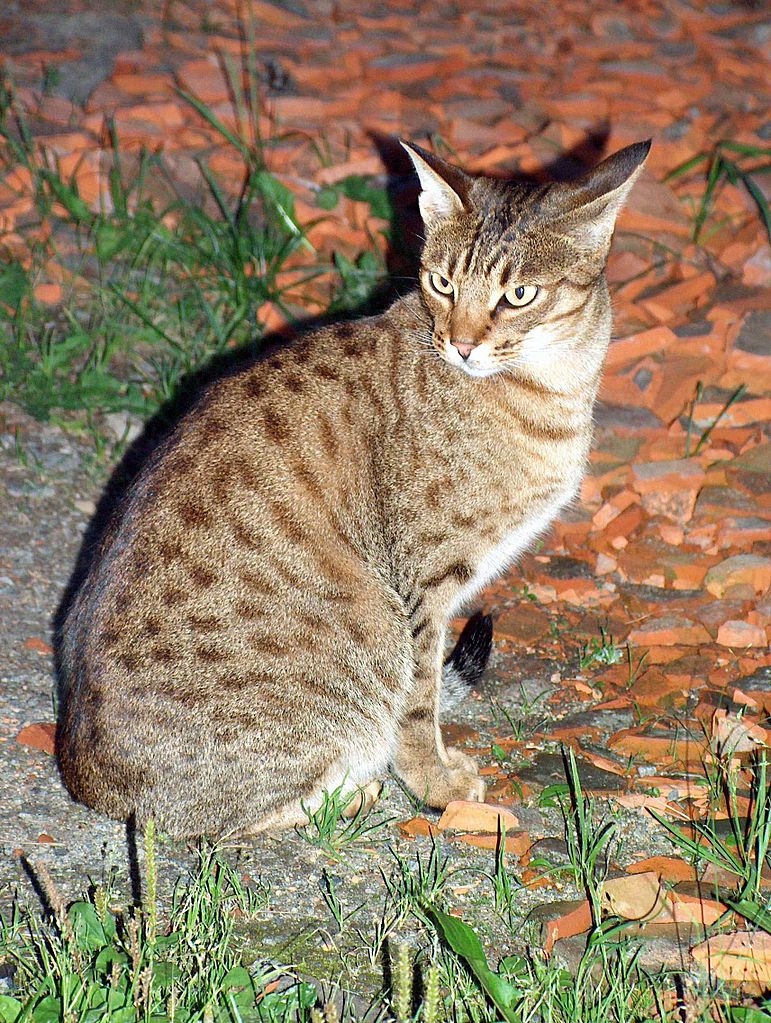 © Wikimedia.org/ToB, CC0
© Wikimedia.org/ToB, CC0
The Ojos Azules is known for its bluish eyes, which are large and round. The neck is arched. The tail is proportionate to the cat's body. The head is somewhat triangular in inscribe. It has a slightly rounded forehead and an angular muzzle. The nose has a slight break. The coat is short, fine, soft, silky, and shiny. The undercoat is not particularly developed, but most are dense in color. All colors are allowed. White markings are common on most extremities (tip of the tail, muzzle, and paws). However, belly spots or chest spots are not acceptable and are considered faults. In particular, they have a white tail tip. Solid white coats are not desirable, as they cannot be distinguished from common white blue-eyed cats. Note that white blue-eyed Ojos Azules are not deaf like most common white blue-eyed cats. In addition, other than cats of the Ojos Azules breed, only white or colorpoint cats can have blue eyes. (Source: Wikipedia.org, CC BY-SA)
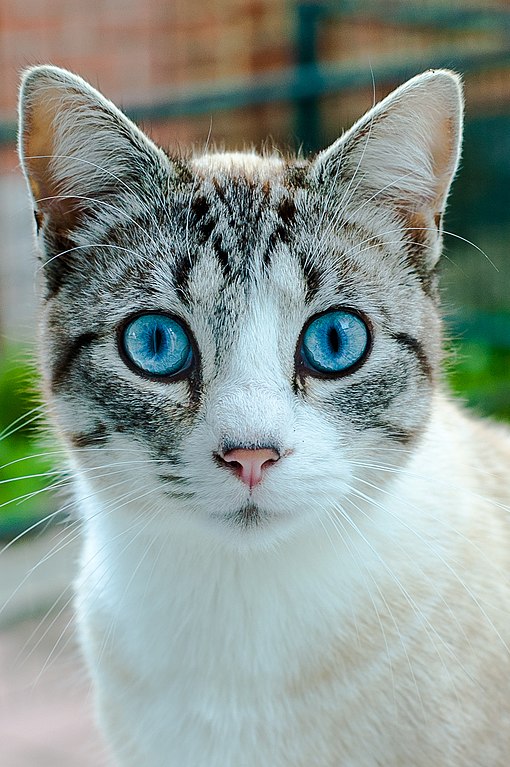 © Wikimedia.org/Kipcurry, CC BY-SA
© Wikimedia.org/Kipcurry, CC BY-SA
An Oriental bicolour is any cat of Oriental type, either long-haired or short-haired and in any pattern including colourpoint, which has white areas on its coat caused by the white spotting gene. In most cat fancier and breeder organisations, Oriental bicolours do not constitute a standardised breed, but a coat pattern variant of the breed of their foundation stock. One breed registry is an exception, the UK-based Governing Council of the Cat Fancy (GCCF), which has defined them as a separate breed named Oriental Bicolour (capitalised). (Source: Wikipedia.org, CC BY-SA)
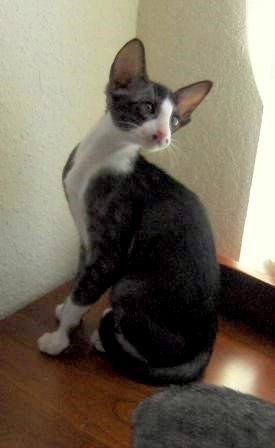 © Wikimedia.org/Cats rule, CC0
© Wikimedia.org/Cats rule, CC0
The Oriental Longhair is a variety of domestic cat. It is closely related to the Oriental Shorthair. The Oriental Longhair in some registries, such as The International Cat Association (TICA), is a separate breed. In others, such as the Cat Fanciers' Association (CFA), it is a division, along with the short-haired variety, of a merged breed, the Oriental. With no globally recognized naming convention, other cat fanciers may refer to this type as Foreign Longhair or Mandarin. It was formerly known as the British Angora before being renamed in 2002 by British cat fanciers in order to avoid confusion with the Turkish Angora. (Source: Wikipedia.org, CC BY-SA)
The Oriental Shorthair is a breed of domestic cat that is developed from and closely related to the Siamese cat. It maintains the modern Siamese head and body type but appears in a wide range of coat colors and patterns. Like the Siamese, Orientals have almond-shaped eyes, a triangular head shape, large ears, and an elongated, slender, and muscular body. Their personalities are also very similar. Orientals are social, intelligent, and many are rather vocal. They often remain playful into adulthood, with many enjoying playing fetch. Despite their slender appearance, they are athletic and can leap into high places. They prefer to live in pairs or groups and also seek human interaction. Unlike the breed's blue-eyed forebear, Orientals are usually green-eyed. The Oriental Longhair differs only with respect to coat length. (Source: Wikipedia.org, CC BY-SA)
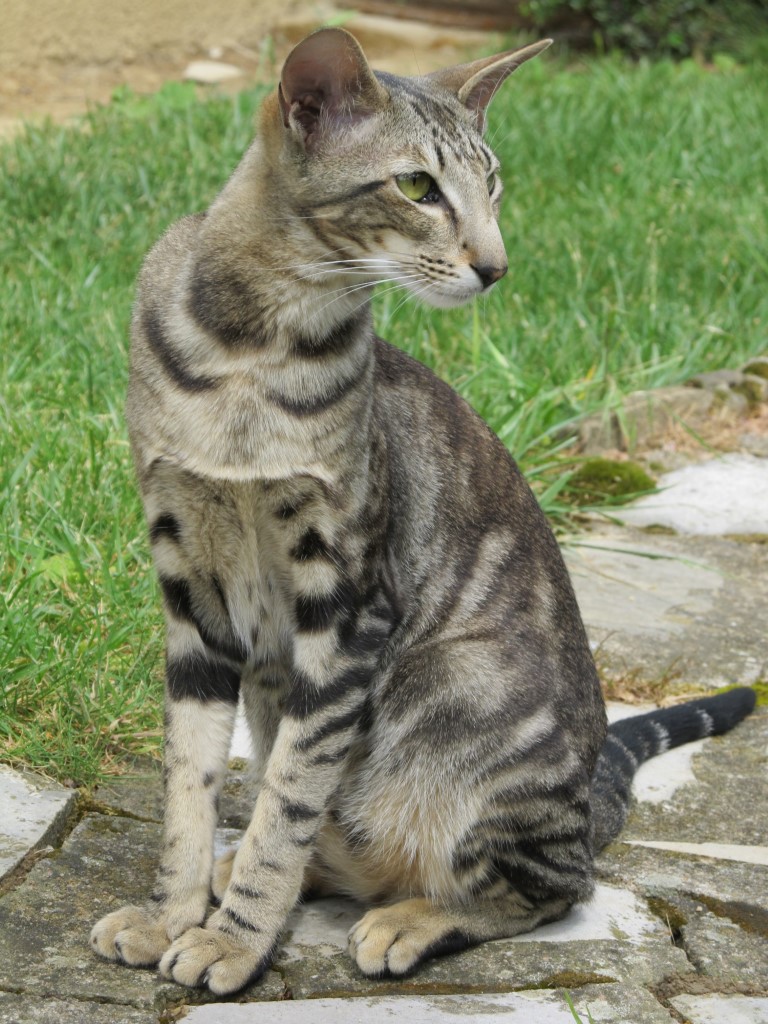 © Wikimedia.org/Daly69, CC BY-SA
© Wikimedia.org/Daly69, CC BY-SA
The Persian cat (Persian: گربه پارسی, romanized: Gorbe'-ye Pârsi), also known as the Persian longhair, is a long-haired breed of cat characterized by a round face and short muzzle. The first documented ancestors of Persian cats were imported into Italy from Persia around 1620. Widely recognized by cat fancy since the late 19th century, Persian cats were first adopted by the British, and later by American breeders after World War II. Some cat fancier organizations' breed standards subsume the Himalayan and Exotic Shorthair as variants of this breed, while others generally treat them as separate breeds. (Source: Wikipedia.org, CC BY-SA)
The Peterbald is a cat breed of Russian origin. It was created in St Petersburg in 1994 from an experimental breeding by Olga S. Mironova. They resemble Oriental Shorthairs with a hair-losing gene. The breed was accepted for Championship class competition in 2009. Peterbalds resemble Oriental Shorthairs. They have a hair-losing gene and can be born bald, flocked, velour, brush, or with a straight coat. Those born with hair, excepting the straight-coats, can lose their hair over time. They come in all colors and markings. (Source: Wikipedia.org, CC BY-SA)
 © Wikimedia.org/Peterbald, CC0
© Wikimedia.org/Peterbald, CC0
The Pixie-bob is a breed of domestic cat claimed to be the progeny of naturally occurring bobcat hybrids. However, DNA testing has failed to detect bobcat marker genes, and Pixie-bobs are considered wholly domestic for the purposes of ownership, cat fancy registration, and import and export. They were, however, selected and bred to look like American bobcats. Pixie-bobs are said to be highly intelligent, social, active, bold, and enjoy playing with other animals. They are also known for their 'chirps', chatters, and growls; most meow scarcely if at all. (Source: Wikipedia.org, CC BY-SA)
The Ragamuffin is a breed of domestic cat. It was once considered to be a variant of the Ragdoll cat but was established as a separate breed in 1994. Ragamuffins are notable for their friendly personalities and thick fur. The physical traits of the breed include a rectangular, broad-chested body with shoulders supporting a short neck. These cats are classified as having heavy bones and a 'substantial' body type. (Source: Wikipedia.org, CC BY-SA)
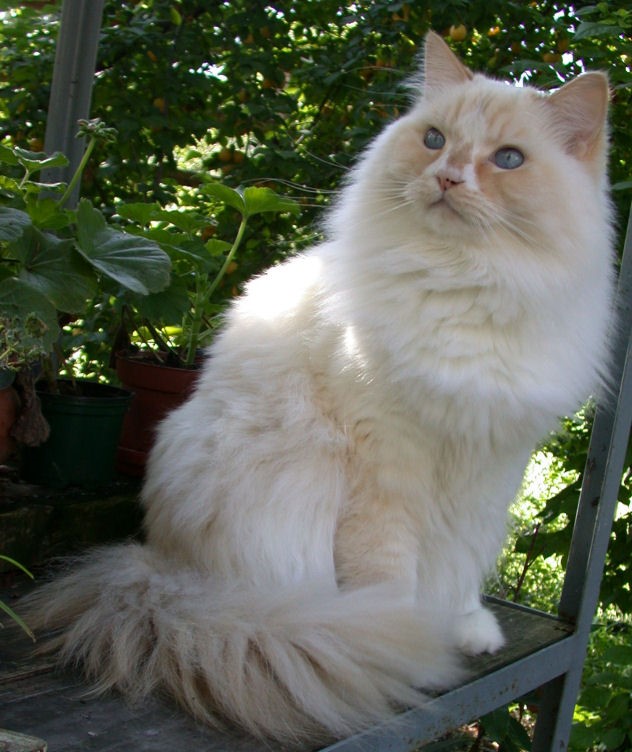 © Wikimedia.org/Iris Preyler-Hamertinger, CC BY-SA
© Wikimedia.org/Iris Preyler-Hamertinger, CC BY-SA
The Ragdoll is a breed of cat with a distinct colorpoint coat and blue eyes. Its morphology is large and weighty, and it has a semi-long and silky soft coat. American breeder Ann Baker developed Ragdolls in the 1960s. They are best known for their docile, placid temperament and affectionate nature. The name 'Ragdoll' is derived from the tendency of individuals from the original breeding stock to go limp and relaxed when picked up. The breed is particularly popular in both the United Kingdom and the United States. Ragdolls are often known as 'dog-like cats' or 'puppy-like cats', due to their tendency to follow people around, their receptiveness to handling, and their relative lack of aggression towards other pets. (Source: Wikipedia.org, CC BY-SA)
The Russian Blue Cat (Russian: Русская голубая кошка, romanized: Russkaya golubaya koshka), commonly referred to as just Russian Blue, is a cat breed with colors that vary from a light shimmering silver to a darker, slate grey. The short, dense coat, which stands out from the body, has been the breed's hallmark for more than a century. The Russian Blue has bright green eyes, pinkish lavender or mauve paws, two layers of short thick fur, and a blue-grey-black coat. The color is a bluish-gray that is the dilute expression of the black gene. (Source: Wikipedia.org, CC BY-SA)
The Savannah is a hybrid cat breed. It results from a cross between a serval and a domestic cat. This hybridization typically produces large and lanky offspring with vibrant spotted coats. The Savannah's tall and slim build give them the appearance of greater size than their actual weight. Size is very dependent on generation and sex, with F1 hybrid male cats usually being the largest. (Source: Wikipedia.org, CC BY-SA)
 © Wikimedia.org/Sokrates 399, CC BY-SA
© Wikimedia.org/Sokrates 399, CC BY-SA
The Selkirk Rex is a breed of cat with highly curled hair. The Selkirk Rex is distinct from all other Rex breeds. Unlike the Devon Rex and Cornish Rex, the hair is of normal length and not partly missing. There are longhair and shorthair varieties. It differs from the LaPerm in that the Selkirk Rex coat is plusher and thicker. While the LaPerm gene is a simple dominant, the Selkirk gene (Se) acts as an incomplete dominant; incompletely dominant allele pairs produce three possible genotypes and phenotypes: heterozygous cats (Sese) may have a fuller coat that is preferred in the show ring, while homozygous cats (SeSe) may have a tighter curl and less coat volume. (Source: Wikipedia.org, CC BY-SA)
The Serengeti is a breed of domestic cat, first developed by crossing a Bengal (domestic and wild hybrid) and an Oriental Shorthair. Recognized and registered by The International Cat Association (TICA), no other first generation crosses can be registered as Serengeti. From the Bengal × Oriental cross came the first foundation Serengeti. Breeders then worked with the cat to produce a cat that resembles the breed profile set by TICA. Created by biologist Karen Sausman of Kingsmark Cattery in California in 1994, the breed is still in the development stages, but the ultimate aim is to produce a cat that looks similar to a serval, without using any recent wild cat blood. (Bengal cats originate from hybridization of leopard cats and domestic cats. Most Bengal cats used in Serengeti breeding programs are many generations removed from these origins and possess few genetic contributions of the wild forebears except alleles affecting coat color.) (Source: Wikipedia.org, CC BY-SA)
The Siamese cat (Thai: แมวไทย, Maeo Thai; แมวสยาม, Maeo Seeaam) is one of the first distinctly recognized breeds of Asian cat. Derived from the Wichianmat landrace, one of several varieties of cat native to Thailand (formerly known as Siam), the original Siamese became one of the most popular breeds in Europe and North America in the 19th century. The carefully refined, more extreme-featured, modern-style Siamese is characterized by blue almond-shaped eyes; a triangular head shape; large ears; an elongated, slender, and muscular body; and various forms of point colouration. Other than colouration, the modern-style Siamese bears little resemblance to the original stock, and the more moderate, traditional, or 'old-style' Siamese, with a much rounder head and body, has been re-established by multiple registries as the Thai cat. The International Cat Association describes the modern Siamese as affectionate, social, intelligent, and playful into adulthood, often enjoying a game of fetch. Siamese tend to seek human interaction and also like companionship from other cats. (Source: Wikipedia.org, CC BY-SA)
The Siberian is a centuries-old landrace (natural variety) of domestic cat in Russia and recently developed as a formal breed with standards promulgated the world over since the late 1980s. Siberians vary from medium to medium-large in size. The formal name of the breed is Siberian Forest Cat, but it is typically referred to as the Siberian or Siberian cat. Another formal breed name is the Moscow Semi-Longhair. The cat is an ancient breed that is now believed to be ancestral to all modern long-haired cats. The cat has similarities with the Norwegian forest cat, to which it is likely closely related. It is a natural breed from Siberia and the national cat of Russia. While it began as a landrace, it is selectively bred and pedigreed today in at least seven major cat fancier and breeder organizations. The colorpoint variant of the breed is called the Neva Masquerade by some registries, including Fédération Internationale Féline (FIFé). (Source: Wikipedia.org, CC BY-SA)
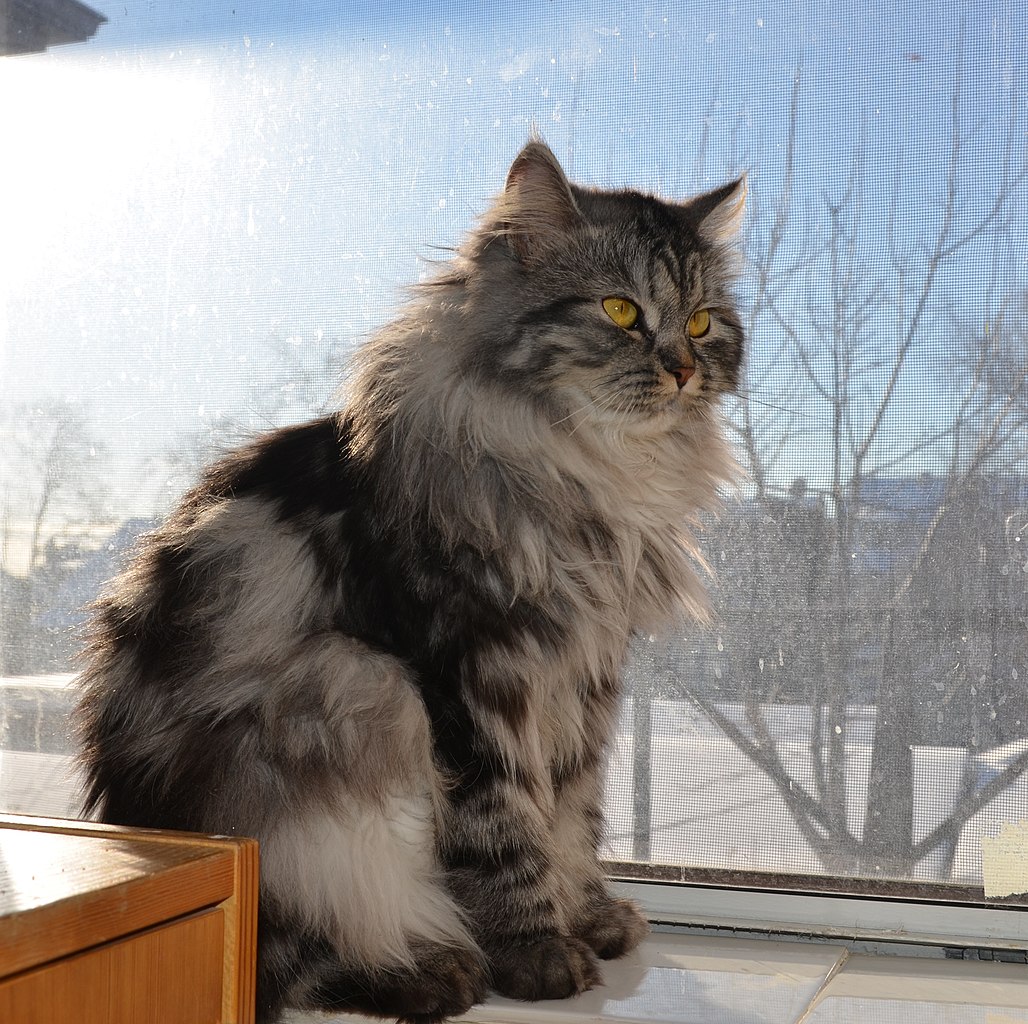 © Wikimedia.org/TimRudyGit, CC BY-SA
© Wikimedia.org/TimRudyGit, CC BY-SA
The Singapura is the smallest breed of cat,[citation needed] noted for its large eyes and ears, ticked coat, and blunt tail. Reportedly established from three 'drain cats' imported from Singapore in the 1970s, it was later revealed that the cats were originally sent to Singapore from the US before they were exported back to the US. Investigations by the Cat Fanciers' Association (CFA) concluded no wrongdoing and the Singapura kept its status as a natural breed. (Source: Wikipedia.org, CC BY-SA)
The Snowshoe is a breed of cat originating in the United States of America in the 1960s. Snowshoes were first produced in Philadelphia when a Siamese breeder's cat gave birth to three kittens with white feet. The breeder, Dorothy Hinds-Daugherty, then began a breeding program to produce what were originally called 'Silver Laces', crossing the strangely marked Siamese cats with bi-color American Shorthair cats and other breeds. When Hinds-Daugherty left the program, Vikki Olander began working with the cats and recruited new breeders, as well as worked towards full recognition within cat associations. Despite having existed for 45 years, Snowshoes are rare due to the difficulty of reproducing the correct coat markings. The marks are based on recessive genes for color points and on the co-dominant but variably-expressed piebald pattern gene, making it difficult to predict the appearance of offspring. (Source: Wikipedia.org, CC BY-SA)
 © Wikimedia.org/Marta.guerra89, CC BY-SA
© Wikimedia.org/Marta.guerra89, CC BY-SA
The Sokoke (or Sokoke Forest Cat in long form, and formerly the African Shorthair) is natural breed of domestic cat, developed and standardised, beginning in the late 1970s, from the feral khadzonzo landrace of eastern, coastal Kenya. The Sokoke is recognized by four major cat pedigree registry organizations as a standardised cat breed.[verification needed] It is named after the Arabuko Sokoke National Forest, the environment from which the foundation stock was obtained, for breed development primarily in Denmark and the United States. The cat is long-legged, with short, coarse hair, and typically a tabby coat, though specific lineages have produced different appearances. Although once rumored to be a domestic × wildcat hybrid, genetic study has not borne out this belief. Another idea, that the variety is unusually ancient, remains unproven either way. The native population is closely related to an island-dwelling group, the Lamu cat, further north. (Source: Wikipedia.org, CC BY-SA)
The Somali cat is genetically similar to the Abyssinian. Due to inheriting 2 copies of the recessive gene for long hair, they have a characteristic luscious coat, unlike their cousin, the Abyssinian cat. Somalis are recognized for their energetic and social nature. Their appearance with sleek bodies, long tails, and large pointed ears have earned them the nickname of 'Fox Cat'. Their ticked coats contain between four and twenty colors on each hair are very fine in texture making their coats softer to the touch than those of other cat breeds. The cat itself is medium-large in size. (Source: Wikipedia.org, CC BY-SA)
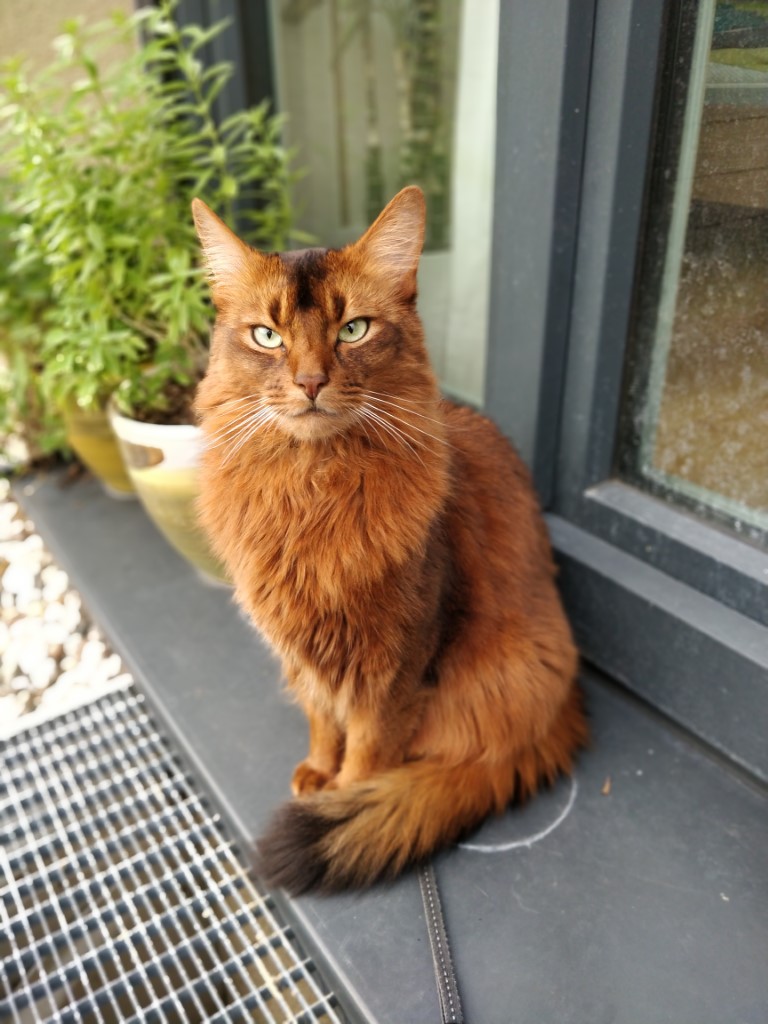 © Wikimedia.org/AbuDun91919, CC BY-SA
© Wikimedia.org/AbuDun91919, CC BY-SA
The Sphynx cat (pronounced SFINGKS, /ˈsfɪŋks/) also known as the Canadian Sphynx, is a breed of cat known for its lack of fur. Hairlessness in cats is a naturally occurring genetic mutation, and the Sphynx was developed through selective breeding of these animals, starting in the 1960s. According to breed standards, the skin should have the texture of chamois leather, as it has fine hairs, or the cat may be completely hairless. Whiskers may be present, either whole or broken, or may be totally absent. The cats have a narrow, long head and webbed feet. Their skin is the color that their fur would be, and all the usual cat markings (solid, point, van, tabby, tortie, etc.) may be found on the Sphynx cat's skin. Because they have no fur, Sphynx cats lose body heat more readily than coated cats, making them both warm to the touch and prone to seeking out warm places. (Source: Wikipedia.org, CC BY-SA)
The Suphalak (Thai: แมวศุภลักษณ์, แมวทองแดง, RTGS: Maeo Suphalak, Maeo Thong Daeng) is a solid reddish-brown copper colored short-haired breed of cat originating in Thailand. The Suphalak is a natural breed and should not be confused with the sable Burmese cat, an established American and European created breed which expresses the colorpoint Burmese gene (cb) that results in a dark points on the extremities such as the ears, feet and tail as well as a dark mask on the face. A written description and pictorial of the Suphalak first appeared in the ancient Thai manuscripts (written by Buddhist monks) over 300 years ago known as the Tamra Maew. (Source: Wikipedia.org, CC BY-SA)
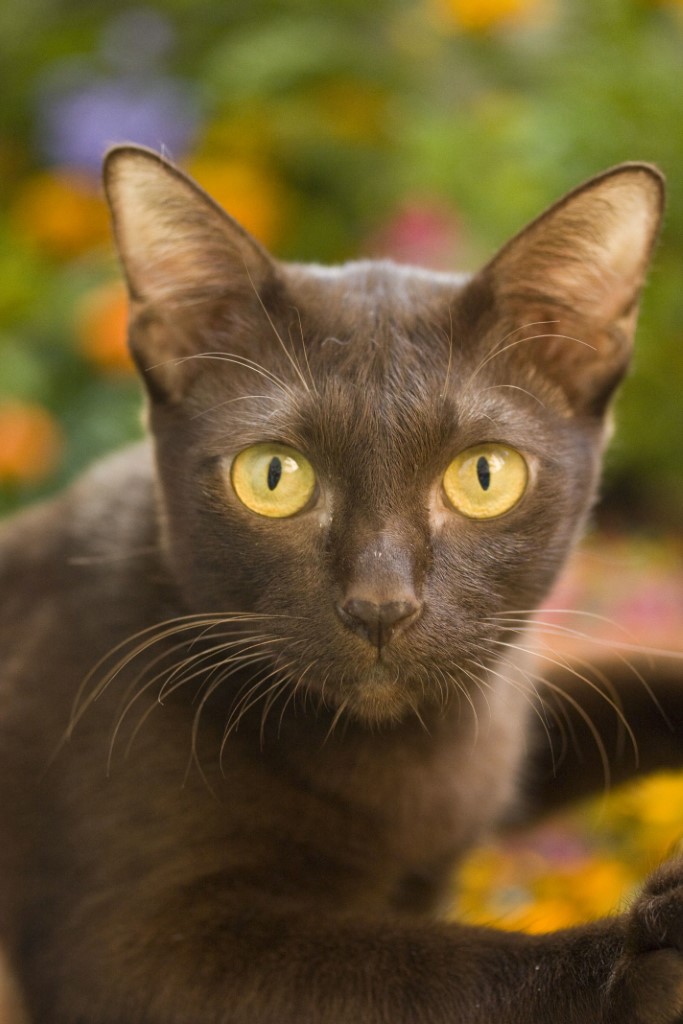 © Wikimedia.org/Maewboran, CC BY-SA
© Wikimedia.org/Maewboran, CC BY-SA
The Thai or Wichien Maat (Thai: วิเชียรมาศ, [wí.tɕʰīan.mâːt] , RTGS: wichianmat, meaning 'diamond gold') is a newly renamed but old cat breed, related to but different from the Western, modern-style Siamese cat. This natural breed is descended from the cats of Thailand, and, among various groups of breeders in different times and places has also been called the Old-Style Siamese, Traditional Siamese, Classic Siamese; Wichien Maat (anglicised from the Thai name); and the Applehead, a nickname that originated in the 1950s (originally as a pejorative used by breeders of the modern-style, more extreme-featured Siamese). According to The International Cat Association: 'The Thai is the breed dedicated to preserving the native pointed cat of Thailand in as close to its original form as possible.'Compared to the modern-style, more extreme-featured Siamese, the traditional Thai breed (and native wichienmaat specimens) have a much more moderate appearance. (Source: Wikipedia.org, CC BY-SA)
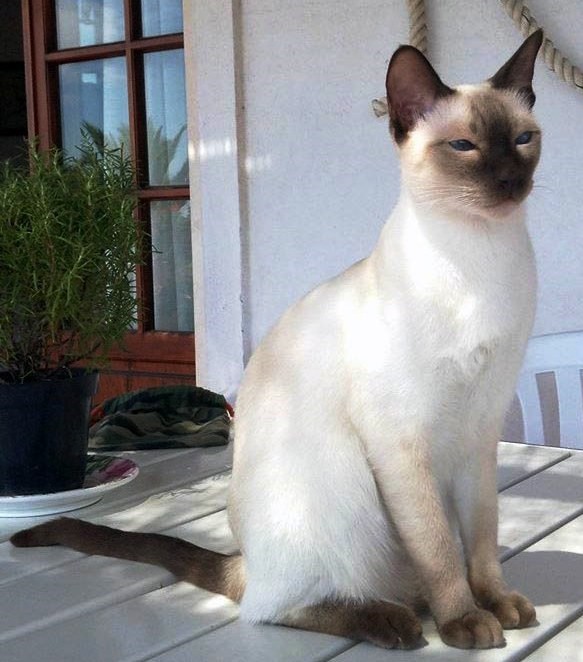 © Wikimedia.org/Phaithai Cattery, CC BY-SA
© Wikimedia.org/Phaithai Cattery, CC BY-SA
Tonkinese is a domestic cat breed produced by crossbreeding between the Siamese and Burmese. Members of the breed share many of their parents' distinctively lively, playful personality traits and are similarly distinguished by a pointed coat pattern in a variety of colors. In addition to the modified coat colors of the 'mink' pattern, which is a dilution of the point color (as in watercolors), the breed is now being shown in the foundation-like Siamese and Burmese colors: pointed with white and solid overall (sepia). The best known variety is the short-haired Tonkinese, but there is a medium-haired (sometimes called Tibetan) which tends to be more popular in Europe, mainly in the Netherlands, Germany, Belgium and France. (Source: Wikipedia.org, CC BY-SA)
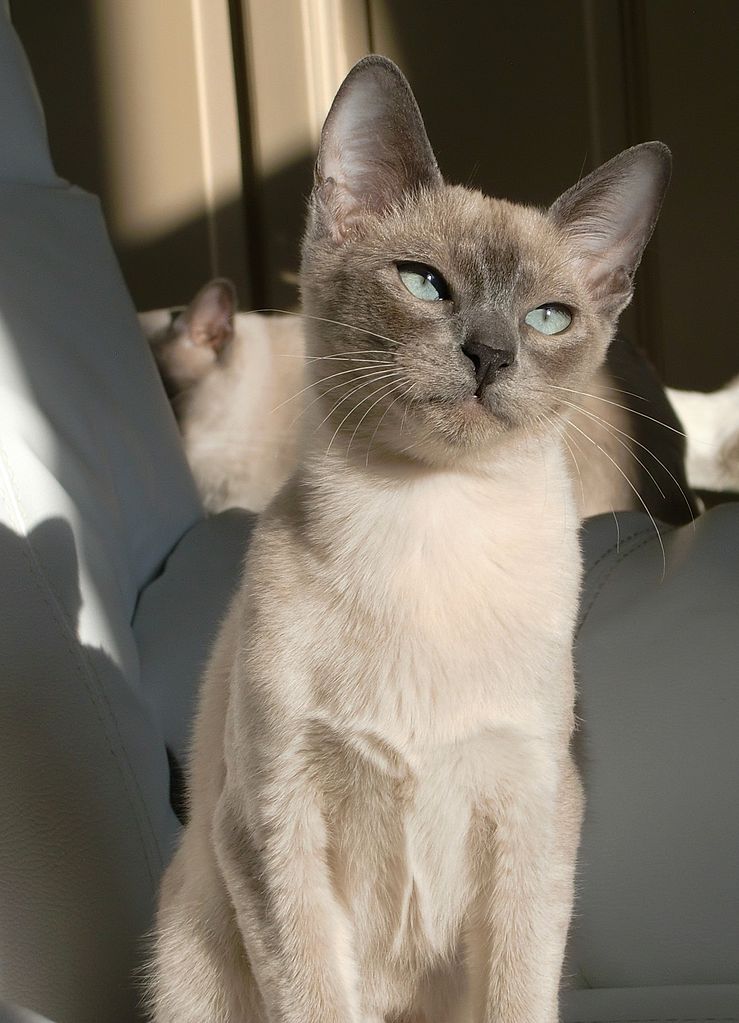 © Wikimedia.org/Edenvane, CC BY-SA
© Wikimedia.org/Edenvane, CC BY-SA
The toyger is a breed of domestic cat, the result of breeding domestic shorthaired tabbies (beginning in the 1980s) to make them resemble a 'toy tiger', as its striped coat is reminiscent of the tiger's. The breed's creator, Judy Sugden, has stated that the breed was developed in order to inspire people to care about the conservation of tigers in the wild. It was recognized for 'registration only' by The International Cat Association in the early 2000s, and advanced through all requirements to be accepted as a full championship breed in 2012. There are about 20 breeders in the United States and another 15 or so in the rest of the world, as of 2012. In 2020, 469 toygers are registered on the Pawpeds Database. (Source: Wikipedia.org, CC BY-SA)

Time for recess! Post a comment, ask a question or write a review. Feel free to let us know what you think!
look at the sign on the road to avoid accidents and horrible driving conditions
I received a 300$ ticket because I passed a police control of other cars/drivers on the right lane of a highway (the control was on the hard shoulder of the highway). Is it really true, that you have to change the lane in such cases? Thanks!
I am an American living in Italy. The Italian Drivers License theory test is the hardest test I have ever studied for and I am in my 70s have multiple degrees, multiple professional certifications. Have to take the Italian Drivers Theory test in Italian. No english. So many rules. More signs in small medieval Italian town I live in then in major US cities I have lived in. No Italian license no driving. No buying or renting a car. Test here was good, clean. Lots of tricky questions on many practice and real official tests. Thanks
Most problems are a result of higher than safe driving speeds. Please just slow down and be patient.
Question 121: Poor translation: Vehicles with polluted fluids prohibited Should be translated as: Vehicles with dangerous liquids prohibited
Question 83: Poor translation: Vehicles with polluted fluids prohibited Should be translated as: Vehicles with dangerous liquids prohibited
Want even more practice? Visit similar websites offering realistic practice driving knowledge tests. Visit us to see what sets our tests apart! https://dkttest.com/capital-territory/
Cool tool! And fun to check whether I remember the rules :) Two things I noticed: Warning for a crossroad side roads on the left and right. While technically that might be the correct translation, this sign tells you, that you are on the main road and have the right of way for the next crossroad and only the next crossroad. Usually (if no sign specifies otherwise) you have to give way to drivers coming from the right at every intersection, which can get a bit annoying in communal areas, so seeing this sign feels less like a warning and more like relief :). A Fahrradstraße is not a lane for cyclists but a street for cyclists, meaning the (whole!) street is intended predominantly for cyclists, who are then allowed to ride next to each other. Cars are allowed to drive there (unless another sign prohibits such), but have to adjust their speed to the cyclists. I believe they are not allowed to pass at all, even if the oncoming lane is empty.
More community